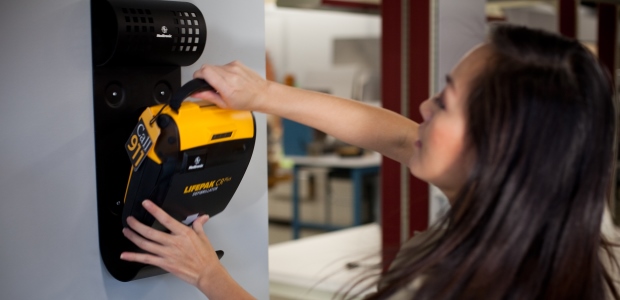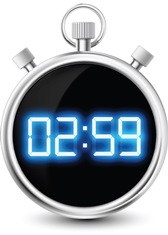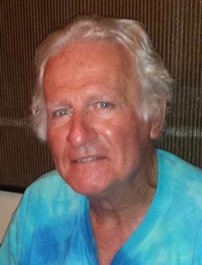
A Safety Plan for a Silent Killer
Following a five-step plan helps you design a program to protect your team from sudden cardiac arrest.
- By Aric Vacchiano, Eddie Martin
- Feb 01, 2017
Unseen to the naked eye.
Often strikes without clear warning.
Always deadly if not treated within minutes.
One of the most dangerous risks to your team might also be among the most invisible and most easily overlooked—the risk of sudden cardiac arrest. But what can a safety manager do to prepare for such an unpredictable event?
Quite a lot.
With more than 300,000 out-of-hospital sudden cardiac arrests taking place each year, it's important for OH&S managers to implement an effective cardiopulmonary resuscitation (CPR) and automated external defibrillator (AED) program. Although not everyone can be saved from sudden cardiac arrest, studies have shown that early defibrillation, combined with high quality "compressions only" CPR, can dramatically improve survival rates.
By putting a comprehensive cardiac arrest response program in place at your facility, you'll be creating a safer environment for your employees and visitors.
A Matter of Time
When sudden cardiac arrest occurs, time is of the essence. A matter of minutes from a person collapsing to when they receive defibrillation can be the difference between life and death.
It sounds like a very narrow window, and it is. If these victims are experiencing ventricular fibrillation—the abnormal rhythm in the heart that often causes sudden cardiac arrest—and receive CPR and a shock from an AED within three minutes of collapse, their survival rate can increase up to 74 percent. Every additional minute of delay lowers the rate of successful resuscitation by 7 to 10 percent.
 To meet a goal of less than three minutes from "drop to shock," that leaves about two minutes to get an AED to the victim (for example, for a security guard to grab an AED and run to the victim or for a co-worker to find an AED and then dash back to the victim).
To meet a goal of less than three minutes from "drop to shock," that leaves about two minutes to get an AED to the victim (for example, for a security guard to grab an AED and run to the victim or for a co-worker to find an AED and then dash back to the victim).
Walking at a brisk pace, a person can cover about 300 feet per minute. How can you ensure that CPR- and AED-trained responders and AED devices are within this distance from any potential cardiac arrest victim?
In short, it's about preparedness: You'll need enough AEDs accessible in key locations, enough people trained on how to use them, and a clear program to manage the readiness and accessibility of each device.
Launching a Program that Saves Lives
By following the steps below, you will create a safety program with the potential to save lives.
Choose an AED that’s easy to use.
The AED you select should be so simple and easy to use that anyone can deploy it without hesitation. Responders must be confident that they can use the device safely and immediately. If they are intimidated by complex operations or unclear instructions, it could cause delays in treatment.
Team up with your local EMS agency.
Your local EMS agency is one of your most important partners in a sudden cardiac arrest response program. To support a smooth transition from your facility to the ambulance to the hospital, it helps to align your AED program with your EMS team. Many EMS jurisdictions maintain an AED location registry, and some also incorporate this information into their dispatching databases.
Hosting a "lunch and learn" session with a local EMS agency can help you understand what features and capabilities they would recommend in an AED. For example, data show that escalating energy is one of the keys to successful defibrillation outcomes.
Put your AEDs where your people are.
Like a fire extinguisher, your AED devices must be placed in visible, accessible locations so one can be reached quickly in an emergency. In developing your plan, review the floorplan of your facility and identify locations where people are most likely to be during the day or during each shift.
Many companies place them near an emergency exit, a first aid kit, or a fire extinguisher. Additionally, take into consideration a person's typical behavior prior to experiencing cardiac arrest. Someone may feel ill and go to the restroom, so placement near that location makes sense. AEDs may also be placed in cafeterias or lounges because those are places where large groups of people often congregate.
Encourage a culture of CPR champions.
While fully automatic AEDs are designed for use by anyone, AED users should be trained in CPR and AED use. Training in CPR and the use of an AED can help raise the comfort and confidence level of potential responders.
Some organizations incorporate formal certification programs to recruit and train employees as "emergency medical first responders." These people are educated in CPR, first aid, and the use of an AED and are situated across the facility in different areas and on different shifts so someone is always available to help respond to an emergency.
Shine a spotlight on lifesaving.
Your CPR and AED program is a campaign for both hearts and minds. By continually raising awareness of the program, you reinforce to employees and visitors that your organization is committed to their safety.
You may want to use posters, magnets, signage, or other means to promote your safety program and identify where the devices are located. When you add a new AED, take the opportunity to give it a name, send an email highlighting its location, and invite people to check it out "on the way to the cafeteria," for example. The key is to continue to promote your AED program and keep it consistently top of mind across the organization, even with any turnover on your team.
Sustaining the Readiness Factor
Once you have devices and people in place, it can be tempting to call your program completed.
Not so fast. Having an AED installed is no comfort if you can't be sure it will work when needed. One of the most important elements of a successful AED program is the understanding that devices need to be continuously monitored and maintained to ensure constant readiness.
When determining which AEDs to include in your program, make sure to consider the devices' need for oversight. Some models place an emphasis on ease of management: The device’s battery charger and electrodes have a synchronized replacement cycle that makes your maintenance program efficient and affordable. You may want a device that includes advanced CPR coaching or that can withstand damage caused by dust or water; this is often measured by "ingress protection" or "IP." Always confirm that your AED devices include the tools and technologies that make streamlined program management possible, no matter the number of devices on site.
Doing Nothing Risks Everything
Without a program in place to respond to sudden cardiac arrest, safety managers are accepting an inherent risk for their teams. Lawmakers are also taking notice of this. Some states have begun removing burdensome AED program regulations in an effort to encourage businesses to reconsider their approach to AEDs, especially if they do not yet provide these devices on their premises.
It’s important to understand your state's laws regarding AEDs and what they might mean for your business—and whether any legislation may potentially increase liability risks if your business fails to adequately offer AEDs on property. You can learn more about your state's AED laws by contacting your local EMS agency or state department of health.
Start Saving Lives Now
While beginning a new program or improving your current program can seem like a daunting task, the steps you take now aren't difficult and are essential to empowering lifesaving responders at your facilities. Sudden cardiac arrest can happen to anyone—anywhere, at any time—but with a program that features the right amount of people trained with the right skills and the right devices always ready in the right locations, you can help provide the greatest chance of survival to your team.
My Life Was Saved By an AED
 When Vaughan Lowry visited a San Diego plasma donation center, the 69-year-old Vietnam veteran hoped to learn about providing plasma. Instead, he unexpectedly found himself on the other end of the lifesaving experience. After Vaughan suddenly collapsed in the center's lobby, three employees rushed to his aid. CPR was administered while one worker grabbed a nearby LIFEPAK CR® Plus AED. A shock was delivered, and a life was saved.
When Vaughan Lowry visited a San Diego plasma donation center, the 69-year-old Vietnam veteran hoped to learn about providing plasma. Instead, he unexpectedly found himself on the other end of the lifesaving experience. After Vaughan suddenly collapsed in the center's lobby, three employees rushed to his aid. CPR was administered while one worker grabbed a nearby LIFEPAK CR® Plus AED. A shock was delivered, and a life was saved.
Thanks to the immediate actions of those around him—and quick access to an AED—Lowry survived and has since been released from the hospital. He has trouble finding the perfect words to describe his gratitude to everyone who helped him.
"They're wonderful people," he says. "How do you thank someone that saves your life?"
Ten Steps to Lifesaving
Launch your CPR and AED program with this checklist:
- Assign a project manager.
- Review laws and regulations.
- Consult local EMS.
- Identify your response team.
- Choose your equipment.
- Train your response team and plan for refresher training.
- Assess how many AEDs you'll need and where to place them.
- Deploy AEDs and other supplies.
- Promote your program.
- Follow your quality assurance plan for people, equipment, and procedures.
This article originally appeared in the February 2017 issue of Occupational Health & Safety.